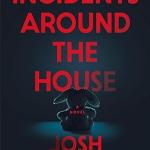
Just a few more thoughts regarding the new Star Wars film, which opens in 12 days.
First, I want to begin my rebutting one of the dumber points made in this article in the Guardian on “40 reasons why the franchise hails from the dark side”:
7) The meals
The meals are one of the blokiest things about the original trilogy. From the moment Luke’s home is blown up, there aren’t any. In space, no one can hear your tummy rumble.
Now this is just stupid. After Luke’s home is destroyed by stormtroopers in Episode IV, the first place he and Obi-Wan go is a cantina, where they order drinks; presumably they could have ordered munchies too. Lando betrays Han, Leia and Chewbacca to Darth Vader in a dining room in Episode V. The Ewoks almost make a meal out of Luke and Han in Episode VI, and presumably the fireside storytelling afterwards takes place after whatever meal they do have. I seem to recall Qui-Gon munching on something at a table as he tells Anakin that pod-racing is very dangerous in Episode I. Anakin levitates a fruit onto Padme’s fork over dinner in Episode II. And this is certainly not an exhaustive list — these are just the first examples that come to mind for each film. (Come to think of it, in Episode V, Luke burns his finger on Yoda’s pot of stew or whatever, and Yoda even says, “For the Jedi, it is time to eat as well.” And in Episode VI, Jabba has a tasty frog snack.)
More importantly, let us not forget also that the food chain — the idea that the physical consumption of one organism by another is a natural part of life — is a major leitmotif in these films. Note the wampa munching on its prey in Episode V, the morally neutral Rancor and Sarlacc in Episode VI, Qui-Gon’s line to the effect that “there’s always a bigger fish” in Episode I, and so on.
Second, I want to say that I do like at least one thing about this film quite a bit, namely the opening sequence in which Anakin and Obi-Wan fly through a space battle on their way to rescuing Chancellor Palpatine, and along the way R2-D2 does battle with several varieties of droid (beginning with so-called “buzz droids”, which cluster on a ship like parasites and rip its outer components apart — very cute!). R2-D2 was always my favorite character in the original movies; he was so resourceful, yet he was also subjected to some rather nasty indignities, but whereas Threepio would always complain about “being made to suffer”, plucky little Artoo just picked himself up and carried on; so it was good to see him get a little of the action here. Indeed, this opening sequence gives the film its one big dose of old-fashioned adventure, with laughs and thrills and whatnot, before the serious stuff kicks in.
Ah, but that serious stuff does kick in. And thus, George Lucas tries to do something he has never done before; he tries to show how a person “converts” from one side of the Force to the other.
I know, I know, supposedly he did this many years ago when he showed Darth Vader converting to the good side of the Force and becoming Anakin Skywalker again, right? But have you ever noticed how timid Vader is in Episode VI, compared to the out-and-out evil he represents in Episodes IV and V? The first time I noticed this was when I saw the “special editions” of the original films in 1997. Vader never does anything all that “bad” in Episode VI, until the second half of the film, when he half-heartedly tries to help the Emperor to tempt Luke to the Dark Side. It is as though the film has softened Vader up to make his salvation more palatable. The real conversion in Vader’s spirit seems to have taken place at some point between Episodes V and VI.
But in Episode III, Anakin starts out as a Jedi hero, and ends up a Sith lord, and somewhere in between we are supposed to watch him change from one to the other. And I still don’t think Lucas pulls it off. (Warning: some spoilers ahead.) Anakin is convincingly muddled in his allegiances — both the Jedi Council and Chancellor Palpatine seed Anakin’s mind with understandable doubts about the other — but he never truly, conclusively decides to take one side against the other. He basically just shows up and intervenes at a duel between Palpatine and one of the Jedi, and his intervention seems, to me, to be an expression of his muddledness, not of a forthright betrayal. And then, once the Jedi loses that duel, Palpatine initiates Anakin into the Sith order right there on the spot — and practically the first command he gives him is to kill all the “younglings”. Whoa! As far as I can tell, nothing in Anakin’s character development up to this point has prepared us to believe he is capable of slaughtering human children in cold blood. (True, in Episode II, he did wipe out an entire group of Tusken Raiders, including their children, in a crime of passion prompted by the death of his mother at their hands; but there is no such passion here, no “I slaughtered them like animals!” bigotry.) Anakin’s beef, so far, is not with the Jedi as a whole, but with the politics of the Jedi Council; however, these Council members are not killed by Anakin but by the Clone Troopers who are given orders to wipe them all out. (Palpatine tells the Troopers to execute “Order #66”, which is no doubt a reference to the Number of the Beast.)
So, big problem there. Anakin’s “revenge” is visited upon people with whom he had no quarrel, while those Jedi with whom he did have problems are killed by mere grunts. Not impossible, as a point of Jedi history, but not very satisfying, dramatically.
Regarding other aspects of the film, my colleague Steve Greydanus points out that Episode III at least recovers from the problem that plagued the first two prequels, namely the way they “lost touch with the mythological and archetypal inspirations of the original trilogy” and got distracted by politics and the like; compared to the previous films, Episode III is once again “grandly operatic”.
I would say this is partly because Episode III is all about the complete and grandly operatic destruction of a political order, instead of all that picky, procedural, nuanced wrangling that took place within it in Episodes I and II; however, this does not stop the film’s characters from speechifying about the need for “democracy” and “liberty”. And unfortunately, along the way to making this story more archetypal, Padme’s character is reduced to little more than The Pregnant Woman — she is no longer the fighter, the politician, the active persona of the earlier prequels.
(Footnote: At what point in a woman’s pregnancy would she know that she was carrying twins and not just one baby? I realize Episode III has to make the twins a last-minute surprise, otherwise Vader would have known about Luke’s sister much, much earlier than he does — but still, the question must be asked.)
What’s more, for all the talk of “democracy” in this film (and coming from people who spoke so cynically about “politicians” in Episode II — how can you have one without the other!?), this film shows the least interest in the actual people whose day-to-day lives may or may not be affected by Palpatine’s plans. Episodes I and II had interesting scenes of people living their lives and running their private businesses and whatnot. Episode III, on the other hand, as near as I can recall, is completely consumed by the political-military-religious conspiracy and clash of powers.
One of the other unnerving things about this film is watching Palpatine get knocked across the room by Yoda, during their fight. We are so used to seeing Palpatine completely, absolutely in control — until Vader finally kills him in Episode VI, of course — that it’s kinda weird, and even disappointing, to see him taken down a notch and made to look more vulnerable like this. When Luke faced the Emperor for the first time in Episode VI, it was a genuinely scary moment because we had been led to believe that Palpatine was so incredibly powerful and mysterious; but if you were to watch the films in numerical order, from Episode I to Episode VI, you wouldn’t feel all that scared, any more.
Still, one thing I do like about this film is the way it holds a mirror to our feelings about death, and our attitudes and approaches thereto. See my “food chain” comment up above for what the film has to say about the “natural” order of things, and in connection with that, see also Yoda’s speech in Episode III about how death is not something to fear; but also take into account a rather curious line near the end of the film about one character’s “immortality”. Dramatically, I don’t care for the way it is shoehorned into the film, or for the way it offers yet another bit of revisionism to the original trilogy’s back story. But it’s interesting, nonetheless.












